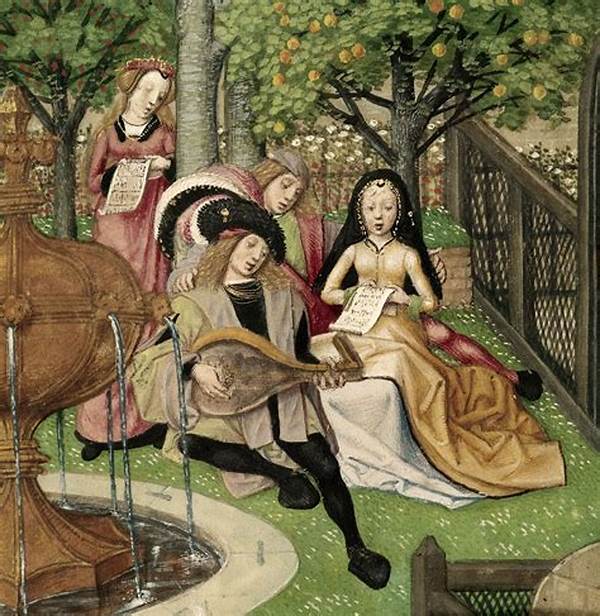Step into the grandeur of royal courts and palaces across the world, and you’ll find more than just opulent architecture and lavish tapestries; there’s an enchanting history of music that fills these majestic spaces. The unique selling point here is the musical instruments that have graced these arenas of power and culture, captivating nobles and commoners alike. It’s a symphony of sophistication, an orchestra of opulence, drawing aristocrats and emperors into a dance of timeless melodies.
Read More : Recommendations For A Vintage Organ With A Retro Analog Sound
These stately settings were once the stage for an exclusive performance of music, where royal courts not only celebrated power but also endorsed a culture of artistic richness. Picture yourself amidst the splendor, soaking in the harmonious tones from instruments that wove tales of triumph and tragedy, soothing the burdens of sovereignty. This narrative invites you to explore the magnificent intersections of music and royalty, a fascinating journey into the ritzy rhythms that have echoed through history.
The Royal Orchestra: A Melody of Prestige
Musical instruments featured in royal courts and palaces worldwide were not merely tools for entertainment; they were symbols of power and sophistication. These instruments told stories of their own, each note a testament to the wealth and influence of their patrons. The exclusivity of these performances was palpable—a personal service, a grand gesture of cultural dominion, a humorous twist to courtly life.
Historically, musicians and their instruments were carefully curated to align with the prestige of the court. The harpsichord, with its intricate design and luscious sound, was a staple in European royal courts. Iconic rulers such as Louis XIV of France used music as a form of political propaganda, staging elaborate performances to showcase wealth and dominance. The sound of the harpsichord thus became synonymous with the French Baroque and a tool for royal influence.
But why stop the show there? From the rhythmic beats of Asian drums to the sonorous strings of the Middle Eastern oud, musical instruments have been a universal language in the tapestry of royalty. Their sounds reverberated through magnificent halls, enticing attention and evoking desire—a living advertisement of the court’s magnificence.
The Role of Music in Royal Ceremonies
Music in royal courts was more than just background ambiance; it was an integral part of ceremonies and daily life. The sheer brilliance of these instruments often marked significant events, providing a soundtrack to the historic milestones of an empire. From coronations to banquets, battles won to peace treaties celebrated, music played a pivotal role in marking the chronology of rulership.
The Harp and its Harmonious Elegance
The harp, with its ethereal strings, was another featured instrument of kings and queens. An ambassador of elegance, its soothing sounds not only entertained but also represented the culture and refinement of the rulers. Often associated with celestial themes, the harp’s inclusion in courtly performances was both aspirational and ceremonial. Its beautiful design and harmonious tones could stand alone as metaphors for the lofty goals and grand aspirations of powerful empires.
Eastern Influences: Gong and Gamelan
In contrast, the far East offered its own musical courtly contributions with instruments like the gong and gamelan—heavy with resonant sounds that symbolized the cycles of life and governance. Played during auspicious ceremonies and royal gatherings, these instruments highlighted the spiritual and authoritative aspects of Eastern rulers, fusing the divine with the regal in auditory brilliance.
Read More : Audio Recording Instruments For Field Production
Examples and Purposes of Courtly Instruments
Musical instruments featured in royal courts and palaces worldwide not only entertained but also served specific functions. Below are some examples detailing their purpose:
Points of Interest: Musical Splendor in Royalty
Understanding the musical instrument featured in royal courts and palaces worldwide gives us insights into how these instruments defined not just melodies but also societal structures. Here are some strategic points that captured the musical magnificence:
Resonance and Royalty
The emotional depth and cultural sophistication inherent in the music played within these grand halls provided an exclusive insight into the lives of monarchs and the cultural zeitgeist of their time. These instruments were more than mere artistic tools; they were conduits of history, echoing the voices of bygone kings and their legacies.
Conclusion: A Symphony of Regality
In summary, the musical instrument featured in royal courts and palaces worldwide served multifaceted roles—emotionally evocative while politically strategic, culturally significant yet universally appreciated. They were sonic bridges among artists, patrons, and audiences, echoing the nuances of power and grace. From opulent European courts to the vibrant dynasties of the East, these instruments encapsulated stories that transcend time, delighting both the historian and the everyday reader with narratives steeped in luxurious notes and royal grandeur.
Such is the timeless allure of these royal instruments, their echoes flowing seamlessly from the past into modern appreciation, continuing to strike a chord in our collective fascination with history’s regal melodies.
